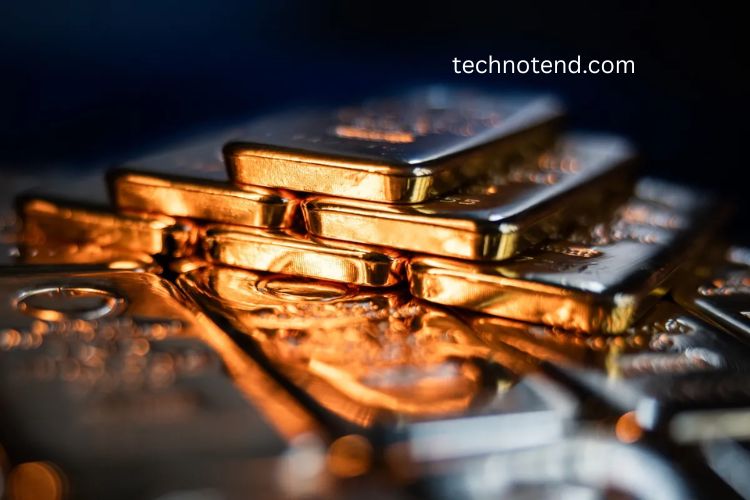Gold prices hovered near $4,000 an ounce as markets digested China’s decision to end a long-standing tax rebate for certain retailers. This move could temper demand in one of the world’s largest precious-metals markets, sending ripples across global bullion trading.
- What the New Tax Policy Means
- Chinese Demand Trends
- Gold’s Recent Rally and Market Dynamics
- Market Reactions and Investor Sentiment
- Strategic Implications for Producers
- What Analysts Are Watching
- Gold’s Outlook
- Frequently Asked Question:
- Why did gold climb near $4,000?
- What does China’s tax policy change involve?
- How could this policy affect global gold prices?
- Did the policy immediately impact Chinese markets?
- What are analysts saying about gold’s near-term outlook?
- How does this affect consumers and retailers?
- Has gold’s long-term momentum changed?
- Conclusion
During U.S. trading hours, spot gold remained relatively steady after falling as much as 1% earlier. Beijing announced that retailers would no longer be able to fully offset the value-added tax (VAT) on gold purchases from the Shanghai Gold Exchange and Shanghai Futures Exchange. The policy change immediately impacted Chinese gold jewelry stocks, triggering a sharp sell-off.
Read More: http://technotend.com/bank-of-england-holds-interest-rates/
What the New Tax Policy Means
Under the revised VAT rules, companies producing non-investment gold—including jewelry and industrial applications such as electronics—can now offset only 6% of VAT, down from 13%. Firms outside the exchanges must also comply when selling investment-grade products, including gold bars.
Adrian Ash, director of research at BullionVault, emphasized that “tax changes in gold’s heaviest consumer nation will dent global sentiment.” Yet, he noted that the rebound in London markets following earlier Asian trading weakness reflects a sustained bullish mood.
The tax shift is expected to push the entire industry to raise prices, according to Citigroup analysts, who predicted that companies will pass on higher costs to consumers.
Chinese Demand Trends
Despite the VAT changes, wholesale gold demand in China has trended 28% below its five-year average over the past quarter. TD Securities analyst Dan Ghali highlighted that the revised VAT exemptions might not have an immediate effect on gold prices, as end-user demand has remained subdued for months.
Bloomberg strategists point out that China’s new policy complicates gold’s holding pattern, potentially threatening its ability to stay above the $4,000 mark. Analysts caution that the global gold market may need official-sector purchases to offset any slowdown in consumer demand.
Gold’s Recent Rally and Market Dynamics
Gold surged to record highs in October, fueled by a retail buying frenzy. Since then, prices have retreated, with gold exchange-traded products (ETPs) recording two consecutive weekly declines. Nevertheless, gold remains up more than 50% this year, reflecting strong support from central banks, institutional investors, and safe-haven demand.
The underlying fundamentals that propelled the rally—including geopolitical uncertainty, inflation concerns, and robust central bank buying—continue to support the market. Analysts argue that these factors may provide resilience against short-term fluctuations caused by policy changes in China.
Market Reactions and Investor Sentiment
Global investors are closely monitoring China’s tax reform and its potential ripple effects. London markets have shown resilience, suggesting that investor sentiment remains largely positive despite headwinds.
Citigroup notes that cost pressures from the tax policy may force retailers to raise prices, which could slow consumption growth but not derail the broader bullish trend. Meanwhile, TD Securities emphasizes that muted end-user demand in China has already constrained price growth, making the immediate market impact limited.
Strategic Implications for Producers
Gold’s rally has also influenced mergers and acquisitions in the mining sector. Notably, Coeur Mining Inc. announced an all-stock acquisition of New Gold Inc. for approximately $7 billion, consolidating two midsize North American producers.
Industry analysts view such deals as a direct consequence of higher gold prices, which create opportunities for strategic expansion. Strong bullion prices allow companies to leverage assets and improve operational scale, potentially strengthening market positions in volatile markets.
What Analysts Are Watching
Market watchers are focusing on several key factors:
- Official-sector demand: Central bank purchases remain a critical driver of gold prices, offering a potential cushion against weaker consumer demand.
- Global economic signals: Inflation trends, currency fluctuations, and geopolitical developments continue to influence investor appetite for safe-haven assets.
- Chinese consumer behavior: The tax policy may reshape domestic buying patterns, particularly for jewelry and non-investment gold products.
- ETP flows: Exchange-traded products serve as a barometer of investor sentiment, with declines signaling caution among retail and institutional investors alike.
Analysts stress that while the Chinese tax change introduces short-term uncertainty, global gold demand fundamentals remain strong, providing continued support for prices.
Gold’s Outlook
Despite recent fluctuations, gold maintains robust momentum. Prices near $4,000 reflect both lingering bullish sentiment and caution over policy changes in China. Market participants are balancing optimism from safe-haven demand against potential headwinds from regulatory shifts.
Long-term trends suggest that gold will continue to attract investors seeking a hedge against inflation and economic uncertainty. Central bank purchases, geopolitical instability, and sustained industrial demand are expected to maintain pressure on prices, even as local policy adjustments create temporary volatility.
Frequently Asked Question:
Why did gold climb near $4,000?
Gold prices rose as investors reacted to China ending a long-standing tax rebate for certain retailers, which could affect demand in one of the world’s largest markets.
What does China’s tax policy change involve?
China reduced the VAT offset for non-investment gold, including jewelry and industrial uses, from 13% to 6%, impacting retailers and some investment products.
How could this policy affect global gold prices?
The policy may slow demand in China, potentially putting pressure on gold prices, though global factors like central bank purchases and safe-haven demand continue to support prices.
Did the policy immediately impact Chinese markets?
Yes, Chinese gold jewelry stocks dropped sharply after the announcement as investors adjusted to the new tax rules.
What are analysts saying about gold’s near-term outlook?
Analysts suggest gold may face some volatility due to the policy change but remains supported by strong fundamentals, including central bank buying and global safe-haven demand.
How does this affect consumers and retailers?
Retailers may pass on higher costs to consumers, potentially increasing jewelry prices, while end-user demand could soften in the short term.
Has gold’s long-term momentum changed?
No, despite short-term fluctuations, gold remains up over 50% this year, and structural demand from investors and industrial uses continues to support the market.
Conclusion
Gold’s steady hold near the $4,000 mark highlights the delicate balance between global optimism and China’s unexpected policy shift. While Beijing’s decision to end the tax rebate for retailers introduces short-term uncertainty, the overall outlook for gold remains strong. Investors continue to view the metal as a safe-haven asset amid inflation risks, geopolitical tensions, and economic fluctuations. Despite potential dips in Chinese consumer demand, global fundamentals—such as central bank accumulation, industrial usage, and investor confidence—continue to reinforce gold’s long-term value. The resilience seen in Western markets after initial declines in Asia underscores that sentiment around gold remains largely bullish.















